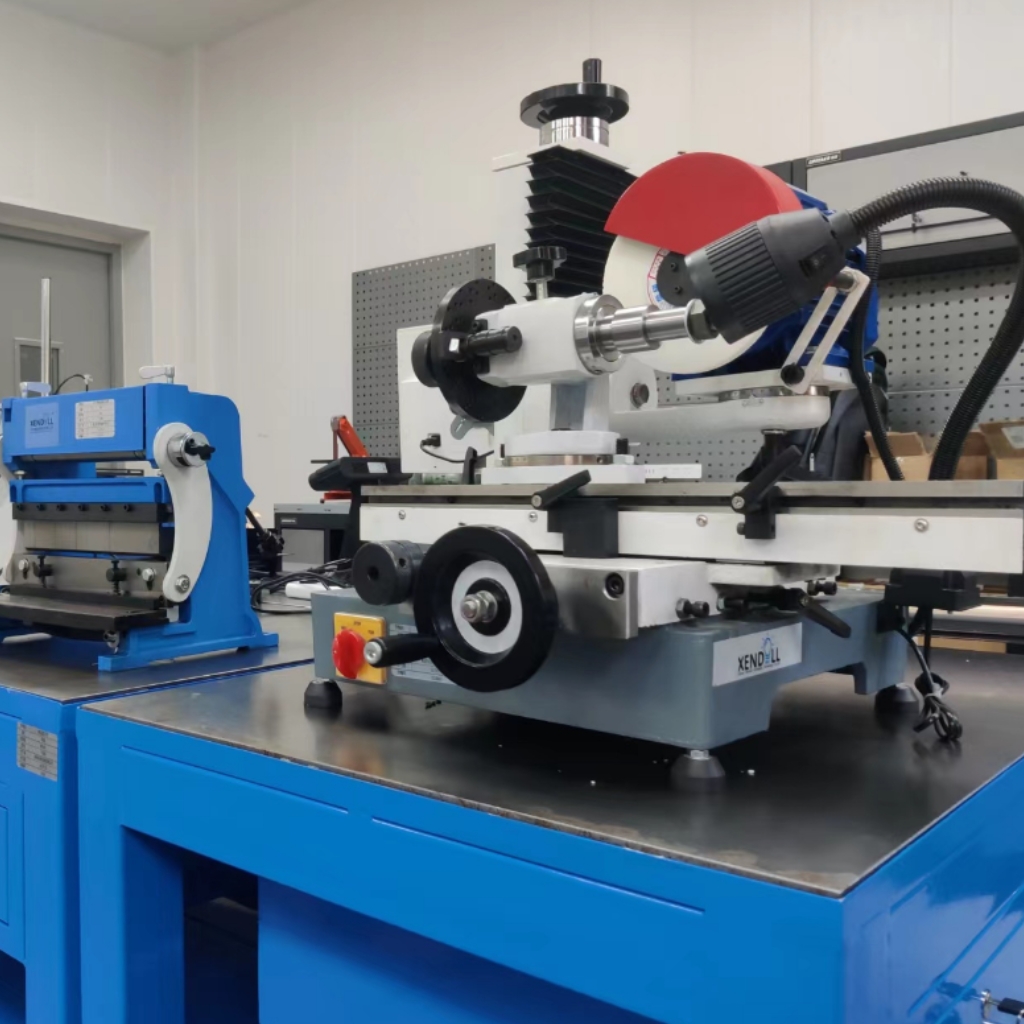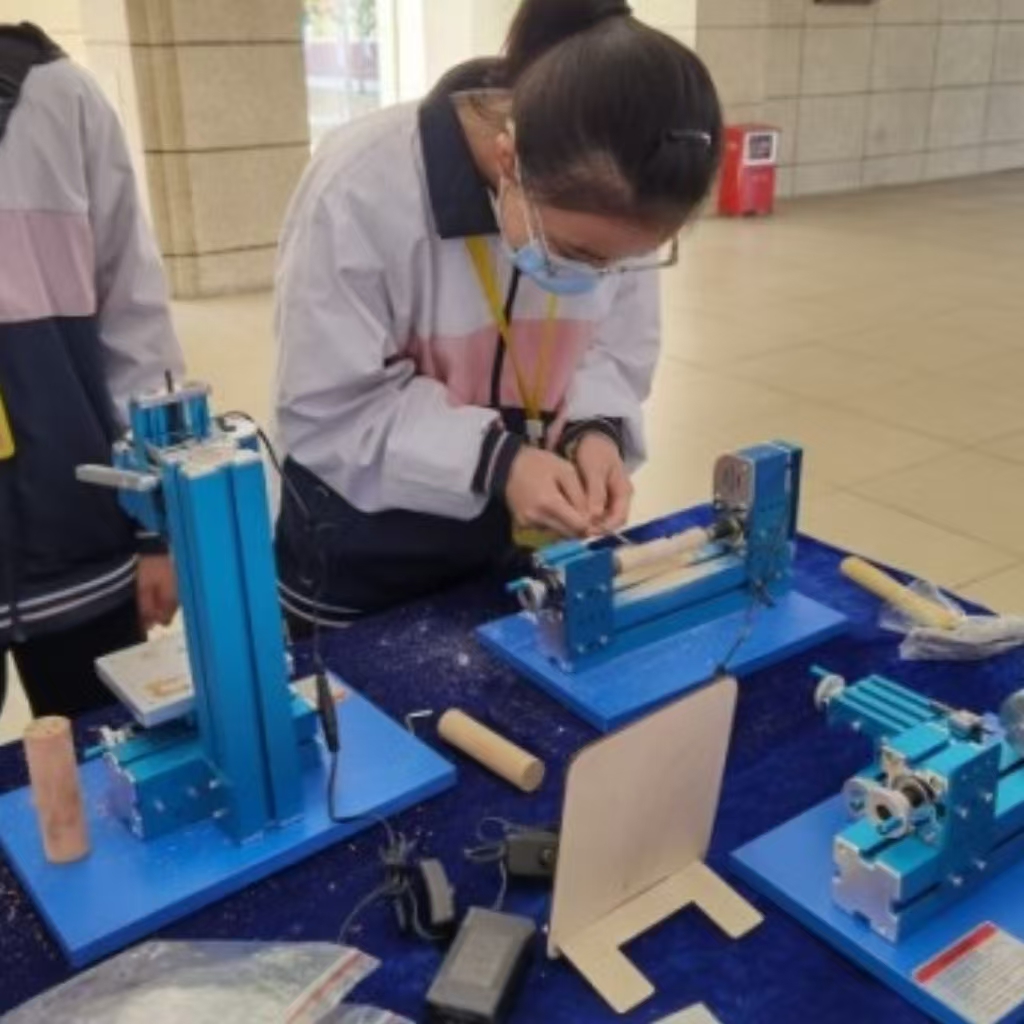A stuck chuck on a wood lathe is a problem every turner—from the enthusiastic hobbyist to the seasoned professional—will inevitably face. That moment when the chuck refuses to budge can bring your creative flow to a grinding halt and, if handled incorrectly, can risk damaging your expensive equipment. But don't worry; this common issue is almost always solvable with the right knowledge, a calm approach, and a few simple tools. This guide will walk you through the safest and most effective methods to free a stubborn chuck and get you back to turning beautiful projects on your Xendoll mini lathe in no time.
Understanding why your chuck is stuck is the first step to removing it safely. Typically, this happens due to a phenomenon known as "taper lock." Most mini and midi wood lathes use a Morse Taper (MT2 is very common) to secure the chuck onto the headstock spindle. This is a self-holding taper that locks into place through friction. Over time, vibrations from turning, changes in temperature and humidity, or a slight imperfection can cause the metal surfaces to fuse together, making it seem permanently stuck.
Before you apply any force, always remember the golden rule: safety first. Ensure the lathe is completely powered off and unplugged. Wear safety glasses to protect your eyes from any flying debris, and sturdy gloves to protect your hands. Never use excessive force with improper tools, as you can damage the precision threads of the spindle.
Here are the methods to remove a stuck chuck, starting from the simplest and safest to the more involved.

Method 1: The Shock and Tap Method (The Most Common Fix)
This method uses a sharp, shock force to break the taper's hold without applying twisting force that could damage components.
Retract the Jaws: Fully retract all the chuck jaws inward. This protects the jaws and gives you a solid metal surface to tap.
Prepare a Wooden Block: Find a scrap piece of hardwood (like oak or maple) that is long enough to hold safely and has a end grain large enough to cover the chuck's center.
Position the Block: Place the end grain of the wood firmly against the chuck body.
Strike Sharply: Using a mallet (a rubber or dead-blow mallet is ideal to avoid metal-on-metal contact), give the end of the wooden block a firm, sharp blow. The goal is to transfer a shockwave through the chuck to break the taper's friction bond.
Catch the Chuck: Often, the chuck will pop loose immediately. Be ready to catch it with your free hand so it doesn't fall and damage your lathe bed or the chuck itself.
Method 2: The Two-Board Method (Leverage is Key)
If the shock method doesn't work, this technique uses leverage safely.
Grip the Chuck: Place two sturdy wooden boards or pieces of thick plywood on either side of the chuck, parallel to the lathe bed.
Apply Pressure: Slide a pry bar or a large screwdriver between the two boards, behind the chuck.
Lever Gently: Use the lathe bed as a fulcrum and apply gentle, steady pressure to lever the chuck forward off the spindle. The boards protect your lathe bed from scratches and dents.
Method 3: Penetrating Oil and Patience
For a chuck that has been stuck for a long time, you may need to break down any corrosion.
Apply Oil: Carefully apply a small amount of a high-quality penetrating oil (like WD-40, Liquid Wrench, or PB Blaster) around the base where the chuck meets the spindle. Avoid getting oil on the internal taper surfaces, as this can affect future holding power.
Wait: Allow the oil to penetrate for at least 15-30 minutes.
Try Again: After waiting, try Method 1 or 2 again. The oil should have helped loosen the bond.
Method 4: The Last Resort (Using a Knock-Out Bar)
Most lathes with a Morse Taper spindle have a hole through the center designed for this exact purpose.
Locate the Hole: Look through the back of the headstock spindle. You should see the end of the chuck's Morse Taper arbor.
Insert the Bar: Use a manufacturer-approved knock-out bar or a long, sturdy rod of brass or steel that is smaller than the hole in the arbor.
Strike Gently: Gently tap the end of the knock-out bar with a hammer. The force will push the chuck arbor straight out of the spindle taper. This is a very effective method but must be done with care to avoid damaging the internal taper.

What NOT to Do:
Do NOT use a pipe wrench on the chuck body, as it will mar and damage the precision surface.
Do NOT strike the chuck or spindle directly with a metal hammer.
Avoid using excessive heat, which can warp metals and ruin the temper of the spindle.
A stuck chuck is a temporary setback, not a permanent problem. By following these methodical steps—starting with the gentle shock of a mallet and wooden block and progressing carefully to more involved solutions—you can safely free your chuck without damaging your valuable wood lathe. Proper maintenance is key to prevention. Always ensure both the internal and external tapers are clean, dry, and free of dust before installation. A quick wipe with a clean cloth after each use can prevent this issue altogether.
At Xendoll Tools, we design our mini CNC machines and lathe accessories with the precision and durability that serious hobbyists and professionals demand. We understand the intricacies of workshop challenges and are committed to providing not only high-quality equipment but also the knowledge to use it effectively. For more tips, tutorials, and to explore our range of reliable and affordable mini lathes and chucks, visit our website at xendolltools.com.
 Sep 11, 2025
Sep 11, 2025

 604
604



 Show all our samples
Show all our samples
 Provide you with a free quote
Provide you with a free quote
 Answer all the questions you may have
Answer all the questions you may have
 Guided installation and other options
Guided installation and other options